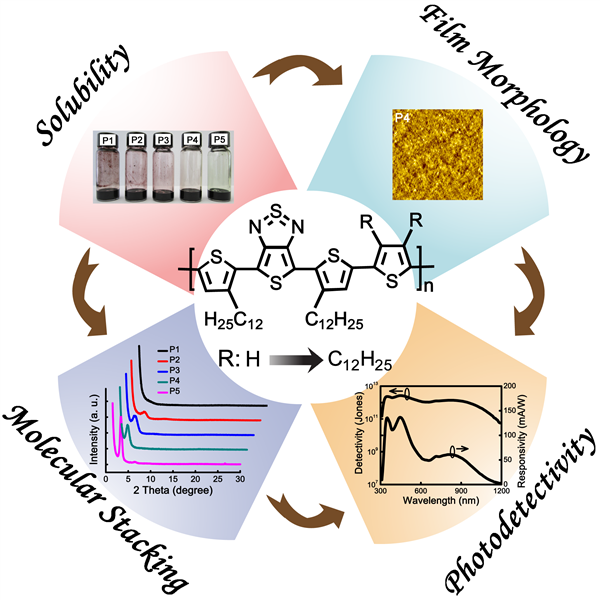[2014][Adv. Funct. Mater., 2014, 24: 7605-7612]Optimization of Solubility, Film Morphology and Photodetector Performance by Molecular Side-Chain Engineering of Low-Bandgap Thienothiadiazole-Based Polymers
writer:Ji Qi, Xiaokang Zhou, Dezhi Yang, Wenqiang Qiao,* Dongge Ma, Zhi Yuan Wang*
keywords:Low-bandgap polymer, Side chain, Solubility, UV-Vis-NIR photodetector, Film morphology
source:期刊
specific source:Adv. Funct. Mater., 2014, 24: 7605-7612
Issue time:2014年
A series of donor–acceptor (D-A) type low-bandgap polymers containing the terthiophene and thieno[3,4-b]thiadiazole units in the main chain but different numbers of identical side chains are designed and synthesized in order to study the effect of side chain on the polymer properties and optimize the performance of polymer photodetectors. Variation in the side chain content can influence the polymer solubility, molecular packing, and film morphology, which in turn affects the photodetector performance, particularly with regard to the photoresponsivity and dark current. X-ray diffraction patterns indicate that molecular ordering increases with more side chains. Atomic force microscopy shows that appropriate morphology of the active layer in the polymer photodetector is necessary for high photocurrent and low dark current. Using BCP as a hole blocking layer (10 nm), the photodetector based on P4 exhibits the optimized performance with specific detectivity of 1.4 × 1012 Jones at 800 nm, which is among the best reported values for polymer photodetectors and even comparable to that of a silicon photodetector.
